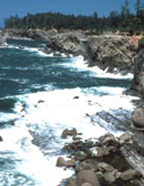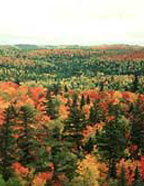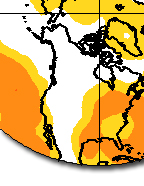|
|
Projects & Grants 


Principal Research Areas
The LEAD Mission
LEAD receives tremendous federal support from the EPA, KAUST, NASA, NOAA and NSF as well as support from the Geology Foundation. What Dr. Yang Has Accomplished Over the past 11 years at UT-Austin, I have built the Land, Environment, and Atmospheric Dynamics (LEAD) program in the Department of Geological Sciences that quantitatively addresses how land surface processes affect and are affected by climate variability and climate change, with a focus on environmental issues of societal importance, such as the conditions of freshwater resources, ecosystems, and air quality. My publications include more than 100 peer-reviewed articles (over 60 in the past 11 years at UT-Austin), in addition to about 100 conference proceedings papers, research reports and presentations abstracts, with a total citation of 3800 and a current “Hirsch Index” of 34. I have won just over $6.4M total as the PI in external funding. My graduate students have received prestigious federal fellowships from the National Science Foundation, NASA, NOAA, Department of Homeland Security, and the AGU Hydrology Section’s Horton Research Grant. I have received the Joseph C. Walter Jr. Excellence Award, the most prestigious award at the Jackson School of Geosciences, and I have been elected as a member of China's "1000-Talents" Program (千人计划; see http://www.1000plan.com/). My group developed the parameterizations of terrestrial hydrology used in the cutting-edge versions of one leading US climate model, the National Center for Atmospheric Research Community Earth System Model (CESM). We also developed the next-generation land surface model (Noah-MP) for the Weather Research and Forecast (WRF) regional modeling system. At UT-Austin, I founded the Center for Integrated Earth System
Science (CIESS;
http://www.jsg.utexas.edu/ciess),
a cooperative effort between the Jackson School of Geosciences and the Cockrell
School of Engineering. society. I have collaborated with Jackson School of
Geosciences colleagues in the Department of Geological Sciences (DGS), the
Bureau of Economic Geology (BEG) and the Institute for Geophysics (UTIG), as
well with scientists in other academic units and institutions. These include,
but are not limited to:
In teaching, I have developed four new courses at UT-Austin,
an introductive undergraduate course “Climate: Past, Present and Future” to a
big class of 120 non-majors, and courses “Hydroclimatology”,
“Physical Climatology”, and
“Land–Atmosphere Interaction Dynamics” to graduate students. In addition, I have
taught two undergraduate courses “Living with a Planet” and “Earth, Wind and
Fire” to 250 to 300 non-science major students. I received in 2004 a Teaching
Excellence Award from the UT-Austin College of Natural Sciences.
My research program has not only attracted top graduate
students to come to my LEAD (Land, Environment, and Atmospheric Dynamics)
program to pursue their graduate degrees, but also attracted acclaimed
climatologists and hydrometeorologists and top researchers to visit (e.g.,
Robert E. Dickinson of Georgia Tech, W. James Shuttleworth of University of
Arizona, Soroosh Sorooshian of UC Irvine, Roger Pielke Sr. of University of
Colorado, Roy Rasmussen/Alex Guenther/Fei Chen of NCAR, Mike Ek/Ken Mitchell of
NCEP, and Paul Dirmeyer of COLA). Drs. Robert E. Dickinson, Rong Fu, Kerry Cook
and several other climate scientists joined, as faculty members, the Department
of Geological Sciences at the Jackson School of Geosciences in 2008.
Together, we have emerged as a strong climate system science program.
|